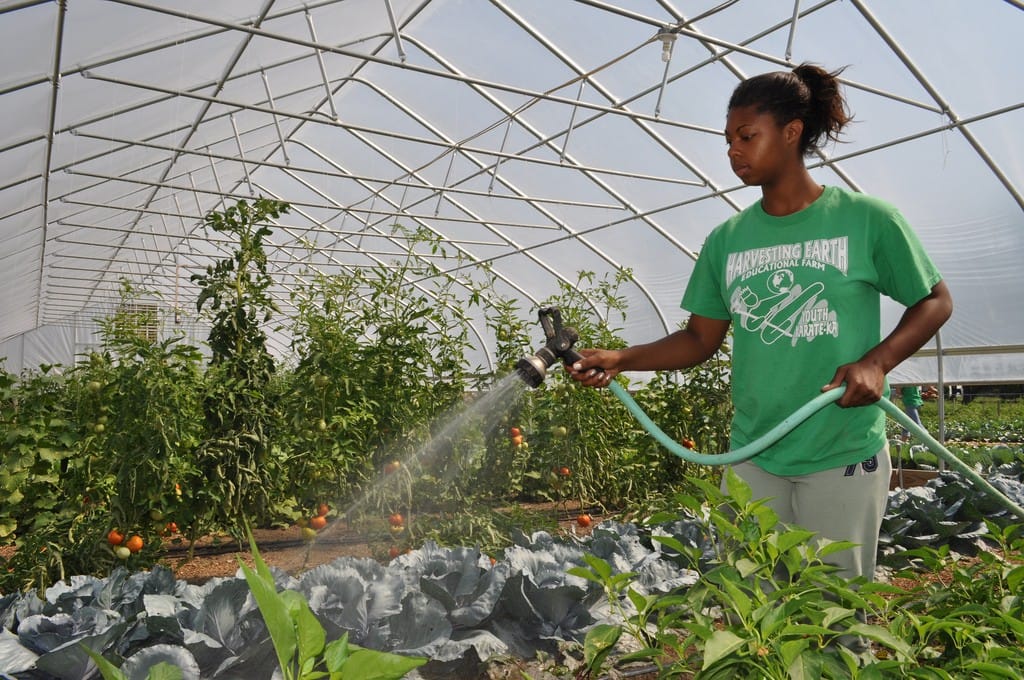Source(s): Faith Peppers, Extension News Editor, College of Agricultural and Environmental Sciences.
What’s the first thing most homeowners are tempted to do when the world begins to bloom in the spring and their lawn is still winter brown?
Fertilize!
But stop! Test your soil before you fertilize.
Using the wrong fertilizer or using fertilizer in the wrong amounts at the wrong time can actually harm your lawn or garden, said Owen Plank, a University of Georgia Extension Service agronomist and soil scientist.
If you have a low nutrient level and don’t put enough fertilizer out, or if you have a high test level and you don’t need fertilizer, you can adversely affect plant growth,” Plank said.
“This is particularly true with some turf grasses, like centipede,” he said. “If you overlime or over fertilize centipede, it can go into centipede decline, and over a few years you can lose the lawn.”
The wrong fertilizer on vegetable gardens can also induce problems.
“With vegetables, like tomatoes, one problem often encountered is blossom end rot,” Plank said. “Several factors can cause it, including inadequate calcium or too much nitrogen. You can induce blossom end rot with improper fertilization.”
Sometimes it’s a matter of timing.
“With certain grasses, the timing of the fertilizer application is critical,” Plank said. “A soil test also tells you what months you should fertilize your lawn.”
A simple soil test can help eliminate fertilizing mistakes and fertilizer waste.
“If a lawn had low pH and the owner didn’t know it, and applied a complete fertilizer to the soil,” Plank said, “nutrients like phosphorus would only be about 50 percent efficient. By knowing the condition of your soil, you can improve fertilizer efficiency.”
One easy soil test can be the fertility gauge for lawns, shrubs, trees, flowers and vegetable gardens.
“The two main reasons to conduct a soil test,” Plank said, “are to find out if the soil needs lime added and to find the relative fertility status of the site, which determines how much fertilizer will need to be applied to raise it to a sufficient level.”
The first step in soil-testing your lawn or garden is to drop by the county Extension office and pick up a leaflet that outlines the proper procedure.
“The leaflet will describe how and when to take the sample and what tools to use,” Plank said.
Once you gather a sample, return it to the Extension office to be shipped to the University of Georgia Soils Lab. Your sample should be analyzed and results returned in about seven days.
“For lawns and gardens, one basic test will take care of 99 percent of the situations encountered,” Plank explained. “That basic test determines the soil pH, lime requirement, phosphorous, potassium, calcium, magnesium, zinc and manganese.”
From the soil test, recommendations are made regarding the amount and type of limestone to use and what fertilizer grade (10-10-10, 8-8-8, etc) to use.
Spring isn’t the only time for soil testing. A soil sample can be taken any time, depending on specific circumstances.
“People wait until early spring to send the samples in, and that’s OK,” Plank said. “But for those who need to lime their lawns or gardens, it’s preferable to test in the fall. You can lime over the winter and it can start reacting, so when the growing season arrives, the soil pH will be favorable for good growth.”
A soil test provides homeowners information essential for growing strong, healthy lawns. A routine soil test made through the Extension office is just $6.00.
Center Publication Number: 18
